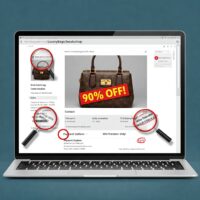<p><strong>Table of Contents</strong></p>



<ol class="wp-block-list">
<li><a href="#introduction">Introduction</a></li>



<li><a href="#types">Types of Personal Information Theft</a></li>



<li><a href="#examples">Examples of Personal Information Theft</a></li>



<li><a href="#prevention">Prevention Tips</a></li>



<li><a href="#report">How to Report Personal Information Theft</a></li>
</ol>



<p><a id="introduction"></a></p>



<h2 id="1-introduction" class="rb-heading-index-0-92387 wp-block-heading">1. Introduction</h2>



<p><strong>Personal information theft</strong> is a widespread issue that affects millions of people every year. This form of theft occurs when someone steals another person&#8217;s private information, such as their name, address, Social Security number, credit card details, or other sensitive data. Criminals use this stolen information for various malicious purposes, including identity theft, <a class="wpil_keyword_link" href="https://www.fraudswatch.com/tag/financial-fraud/" title="financial" data-wpil-keyword-link="linked" data-wpil-monitor-id="1002">financial</a> fraud, and online scams. In this article, we will discuss the types of personal information theft, provide examples, outline prevention tips, and explain how to report such crimes.</p>



<p><a id="types"></a></p>



<h2 id="2-types-of-personal-information-theft" class="rb-heading-index-1-92387 wp-block-heading">2. Types of Personal Information Theft</h2>



<p>Personal information theft can take many forms, with criminals using various tactics to obtain sensitive data. Some of the most common types include:</p>



<ol class="wp-block-list">
<li><strong><a href="https://www.fraudswatch.com/tag/phishing-scams/" data-type="URL" data-id="https://www.fraudswatch.com/tag/phishing-scams/">Phishing</a>:</strong> Fraudulent emails, text messages, or phone calls that attempt to trick recipients into revealing personal information.</li>



<li><strong>Data breaches:</strong> Unauthorized access to databases or systems containing personal information.</li>



<li><strong>Physical theft:</strong> Stealing physical items such as wallets, purses, or mail that contains personal information.</li>



<li><strong>Social engineering:</strong> Manipulating individuals into divulging sensitive information through psychological tactics.</li>



<li><strong>Malware and spyware:</strong> Malicious software that infiltrates devices to steal personal information or monitor user activity.</li>
</ol>



<p><a id="examples"></a></p>



<h2 id="3-examples-of-personal-information-theft" class="rb-heading-index-2-92387 wp-block-heading">3. Examples of Personal Information Theft</h2>



<p>The following examples illustrate the various ways personal information theft can occur:</p>



<ol class="wp-block-list">
<li><strong><a href="https://www.fraudswatch.com/scammer-email-addresses-directory-catalog/" data-type="URL" data-id="https://www.fraudswatch.com/scammer-email-addresses-directory-catalog/">Email phishing scams</a>:</strong> A victim receives an email claiming to be from their bank, asking them to verify their account details. The email contains a link to a fake website that captures the user&#8217;s login credentials when entered.</li>



<li><strong>Retail data breach:</strong> A major retailer experiences a data breach, resulting in the theft of millions of customers&#8217; credit card details.</li>



<li><strong>Stolen wallet:</strong> A thief steals a wallet containing the victim&#8217;s driver&#8217;s license, credit cards, and Social Security card.</li>



<li><strong>Social media impersonation:</strong> A criminal creates a fake social media profile impersonating the victim to trick friends and family members into revealing sensitive information.</li>



<li><strong><a href="https://www.fraudswatch.com/phishing-fraudulent-and-malicious-websites/" data-type="URL" data-id="https://www.fraudswatch.com/phishing-fraudulent-and-malicious-websites/">Malware attack</a>:</strong> A user inadvertently downloads malware that records their keystrokes, allowing the attacker to capture login credentials and other sensitive information.</li>
</ol>



<p><a id="prevention"></a></p>



<h2 id="4-prevention-tips" class="rb-heading-index-3-92387 wp-block-heading">4. Prevention Tips</h2>



<p>Protecting oneself from personal information theft involves being vigilant and adopting proactive measures. Here are some tips to help prevent this type of crime:</p>



<ol class="wp-block-list">
<li><strong>Use strong, unique passwords:</strong> Create complex passwords for each of your accounts and avoid reusing them. Use a combination of upper and lower case letters, numbers, and special characters. Consider using a password manager to help you remember and manage your passwords securely.</li>



<li><strong>Enable multi-factor authentication (MFA):</strong> Whenever possible, enable MFA on your accounts. This adds an extra layer of security by requiring additional verification, such as a fingerprint or a one-time code sent to your phone.</li>



<li><strong>Be cautious with emails and links:</strong> Do not click on suspicious links, and always verify the sender&#8217;s email address before responding or providing personal information. Be wary of unsolicited messages asking for your personal details.</li>



<li><strong>Keep your software up to date:</strong> Regularly update your devices&#8217; operating systems, antivirus software, and applications. This helps protect against known vulnerabilities and malware.</li>



<li><strong>Monitor your financial accounts:</strong> Regularly review your bank and credit card statements for any unauthorized transactions. Report any discrepancies immediately.</li>



<li><strong>Protect your physical documents:</strong> Keep sensitive documents, such as passports, Social Security cards, and financial records, in a secure location. Shred any unneeded documents that contain personal information before disposing of them.</li>



<li><strong>Limit the personal information you share online:</strong> Be cautious about what you share on social media and other websites. Adjust your privacy settings to limit who can view your information.</li>



<li><strong>Secure your home network:</strong> Use a strong, unique password for your Wi-Fi network and enable encryption to protect your data from eavesdroppers.</li>
</ol>



<p><a id="report"></a></p>



<h2 id="5-how-to-report-personal-information-theft" class="rb-heading-index-4-92387 wp-block-heading">5. How to Report Personal Information Theft</h2>



<p>If you suspect that your personal information has been stolen or compromised, take the following steps to report the theft:</p>



<ol class="wp-block-list">
<li><strong>Contact your financial institutions:</strong> Notify your bank, credit card companies, and any other financial institutions to inform them of the potential theft. They can place a temporary hold on your accounts or issue new account numbers and cards.</li>



<li><strong>File a report with your local police:</strong> Report the theft to your local police department, providing as much information as possible. Obtain a copy of the police report for your records.</li>



<li><strong>Report identity theft to the Federal Trade Commission (FTC):</strong> Visit IdentityTheft.gov to file a report with the FTC. This helps the government track and investigate identity theft cases.</li>



<li><strong>Place a fraud alert on your credit reports:</strong> Contact one of the three major credit bureaus (Equifax, Experian, or TransUnion) to place a fraud alert on your credit reports. This requires creditors to verify your identity before issuing new credit in your name. Placing a fraud alert with one bureau will automatically notify the other two.</li>



<li><strong>Monitor your credit reports regularly:</strong> Obtain a free credit report from each of the three major credit bureaus annually at AnnualCreditReport.com. Review your reports for any suspicious activity or new accounts you did not open.</li>
</ol>



<p>By understanding the types of personal information theft, recognizing the warning signs, and taking preventive measures, you can reduce the risk of becoming a victim. If you suspect your personal information has been compromised, report it to the appropriate authorities and take steps to protect your identity and finances.</p>

Personal Information Theft: Types, Examples, Prevention, and Reporting
FraudsWatch is а site reporting on fraud and scammers on internet, in financial services and personal. Providing a daily news service publishes articles contributed by experts; is widely reported in thе latest compliance requirements, and offers very broad coverage of thе latest online theft cases, pending investigations and threats of fraud.
Leave a Comment


The Ultimate Guide to Avoiding Online Scams
Stay safe online! Our comprehensive 2025 guide covers phishing, AI scams, investment fraud & more. Learn red flags, prevention steps & how to report scams. Protect yourself now via Fraudswatch.com.
Read More
Categories
- AOL Aim Live ATT
- Celebrities Scammed
- Credit Card
- Credit Scam
- Email Man-Male Scammers
- Email Scam List
- Email Scams Examples
- Fraud
- Fraud News From World
- Fraud Prevention
- Gmail.com
- Hotmail.com
- Insurance
- Jobsearch Scams
- Loans
- Military Scammer
- Mortgage
- Nigerian 419
- Report Fraud
- Romance Scammer
- Russian Email Scam
- Scammer
- Scams Ways
- Shopping & Saving Money
- Spam
- White-Collar Crime
- Yahoo.com
Recent Posts
- Bulletproof Betrayal: Inside the $5.2 Million ShotStop Fraud That Sold Counterfeit Body Armor to America’s Law Enforcement July 8, 2025
- The Weapon of Experience: Inside the $28M Memphis Pharmacy Fraud and a Prior Conviction at the Heart of a Record-Breaking National Takedown July 2, 2025
- Chicago Businessman Convicted in $55 Million Fraud Scheme Targeting COVID-19 Relief Funds and Financial Institutions July 2, 2025
- Betrayal in the Classroom: An In-Depth Analysis of the Unprecedented Criminal Charges Against the School District of Philadelphia for Asbestos Failures June 28, 2025
- Anatomy of a Scandal: How a NY Governor’s Aide Allegedly Masterminded an $8M COVID PPE Fraud and Kickback Scheme June 28, 2025
Tags
Bank Fraud
Banking Fraud
Bankruptcy Fraud
Bribery Scheme
Business Fraud
Celebrities Scammed
Charity Fraud
Commodities Fraud
Consumer Fraud
Consumer Protection
COVID-19 relief fraud
Credit
Credit card
Credit Card Fraud
Credit Repair
Credit Repair Scams
Crime
Cyber Crime
Cybercrime
Cyber Criminals
Cybersecurity
data breach
Dating Scammer
Elder Fraud
Elder Justice
Email
Email Letter
Email Scam
Email Scam Examamples
Email Scam Example
Email Scam Examples
Email Scams
Email Scams Examples
False Claims Act
FBI
Fedex
Financial Crime
Financial Fraud
Fraud
fraud prevention
Fraud Scheme
Health
Health and Wellness Scams
Health Care Fraud
Healthcare Fraud
Identity Theft
Immigration Fraud
Insurance
Insurance Fraud
Internet Fraud
Investment Fraud
job
Job Scam
job scams
Loan
Loan Fraud
Loan Scam
Loans Fraud
Lottery Scam
Mail Fraud
Medicare Fraud
Microsoft
Military Scammer
Military Scammer LT. JEFFREY MILLER
Military Scammers
Money Laundering
Money Laundering Scheme
Mortgage
Mortgage Fraud
Mortgage Scam
Mortgage Scams
National Security
Nigerian
Nigerian 419
Nigerian Scam
online fraud
Online Scams
PayPal
personal information
Phishing
Phishing Scams
Ponzi Scheme
Public Corruption
Ransomware
Report Fraud
Romance Scam
Romance Scammer
Romance Scammers
Romance Scams
Scam
Scammer
Scammers
scams
Securities Fraud
spam
Tax Evasion
Tax Fraud
Travel Scams
White Collar Crimes
wire fraud















